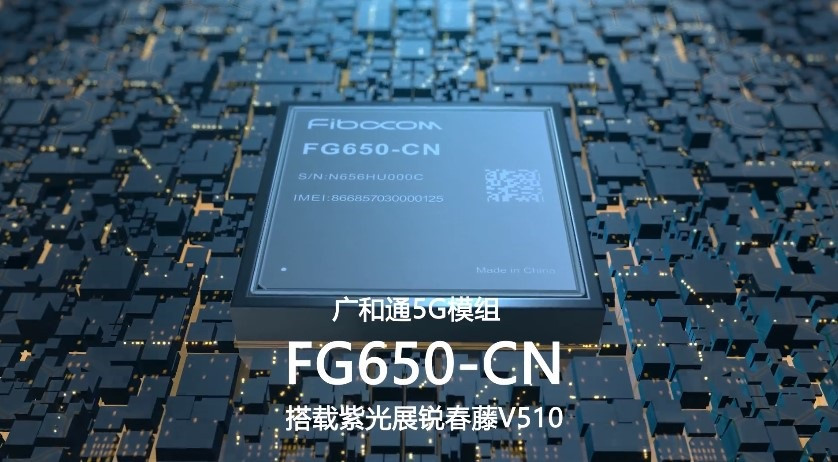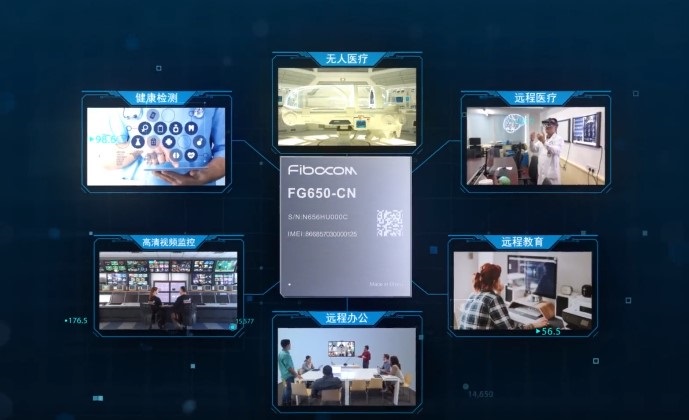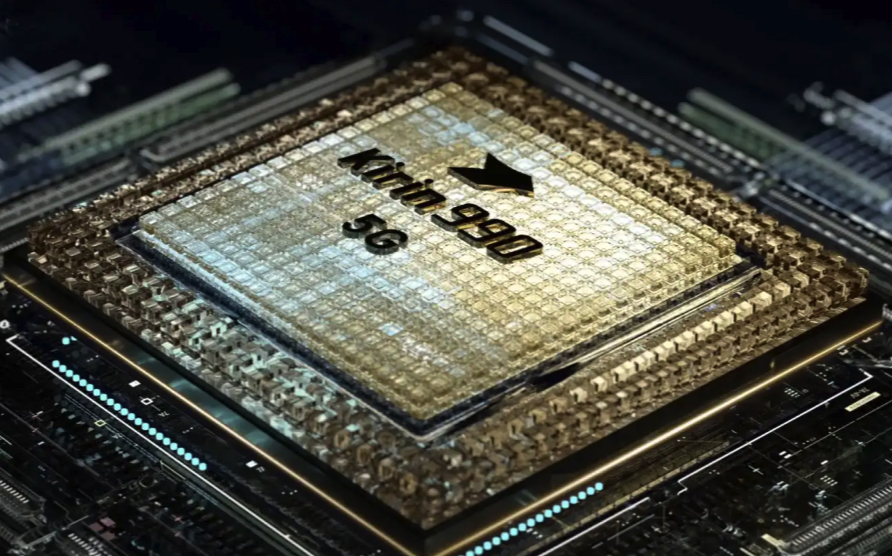Hendrik_2000
Lieutenant General
Via CMP does this mean that Huawei is getting into Chip making or just contracting out to SMIC?
Huawei inks deal in Shanghai to create its own microchips
Tech giant will cooperate with China-based chipmaker SMIC and Shanghai Microelectronics to 'break the US monopoly' of foreign semiconductor fabs
by Chris Gill
Huawei inks deal in Shanghai to create its own microchips
A big crowd gathered in central Shanghai for the opening of Huawei's giant new store in the city this week. Photo: AFP.
(ATF) The US has worked aggressively to halt the global supply of microchips to Chinese tech firm Huawei. As the company was originally formed from part of the PLA – the People's Liberation Army – during China's drive to modernise in recent decades, Huawei has always been regarded as a semi-autonomous firm, with a strong allegiance to the Chinese Communist Party.
Within this context, Huawei HiSilicon has proposed that its Kirin series chips, that have been developed over a number of years, go into production. Huawei CEO Ren Zhengfei expressed gratitude to the United States for giving the company a real opportunity to develop this product.
It is estimated that Huawei has a big stockpile of chip which will tide it over while it develops its own. In addition, Huawei had intended to achieve a win-win cooperation deal with TSMC, a Taiwan-based chipmaker, but the USA put the kybosh on that.
So, Huawei had to come up with a strategy to cooperate with China-based chipmaker SMIC. However, SMIC lacks capacity and the scale of technology to meet Huawei’s needs.
But now Shanghai Microelectronics has announced it will step into the breach and manufacture the technology that SMIC is missing. If the company can achieve its aim, it will "break the monopoly" of foreign semiconductor fabs.
Throughout the confrontation between Huawei and the United States, the firm has more or less conducted business as usual.
Approval for UK R&D facility
A deal has been signed to build a more than £1-billion research facility in Cambridge Silicon Fen in England. Recently, the South Cambridgeshire District Council in the United Kingdom held a remote planning meeting and approved the construction plan for Huawei's R&D centre, which will become the global headquarters of Huawei's opto-electronic business.
And the UK government has finally given the nod to allow Huawei to participate in Britain's 5G network.
Huawei also has plans for a PC chip design to rival Apple, AMD and Intel.
Today, Huawei mainly depends on the chip supply from SMIC, but the shortage of high-end machines is a major problem for the tech giant. Dutch ASML companies are subject to interference via the shares of American companies and are unable to provide advanced products to China.
As of now, the Shanghai Microelectronics has launched its first domestic machine, using ARF technology, which it says can fully meet the current needs of SMIC.
According to experts, the advanced machinery launched by Shanghai Microelectronics can accurately produce 11-nanometer chips, although the current large demand for Huawei is mainly supplying 14-nanometer chips.
And, based on this new breakthrough, Shanghai Microelectronics is also advancing to a 7-nanometer chip process. After one more step, the company says it will have machines capable of making 7-nanometer chips – "just around the corner".
SMIC has wafer fabrication sites throughout mainland China, plus offices in the United States, Italy, Japan, and Taiwan, and a representative office in Hong Kong. It is headquartered in Shanghai and incorporated in the Cayman Islands.
But misses Singapore 5G deal
Meanwhile, Nokia and Ericsson have been chosen as Singapore's main 5G network providers, telecom operators said, leaving Huawei with only a minor role as the Chinese tech giant faces growing US pressure.
Huawei has been dogged by allegations of stealing American trade secrets and aiding China's espionage efforts, with Washington pushing countries to bar the company from involvement in their next-generation networks.
Huawei has denied ties with the Chinese government.
Singtel, one of the city-state's main telecom operators, said on Wednesday it had chosen Sweden's Ericsson to build its 5G network after the government gave final approval.
A joint venture that includes the country's two other major telecom operators, M1 and StarHub, announced it had opted for Nokia to build its main 5G infrastructure.
However, both M1 and Starhub said that other firms, including Huawei, could have some involvement in the project.
Huawei only won the contract to be a provider for a smaller, local network system, operated by TPG Telecom, a more minor player.
The Southeast Asian city-state tries to maintain good relations with both the US and China, and Information Minister S. Iswaran insisted that no company had been excluded in the selection process.
"We have run a robust process spelling out our requirements in terms of performance, security and resilience," he said, adding that mobile network operators also had their own criteria.
"There is a diversity of vendors participating in different parts of the 5G ecosystem, and... there remain prospects for greater involvement in our 5G system going forward."
Iswaran said the 5G investments will run into "billions of dollars".
'Knowing your supplier'
Singapore is aiming to have ultra high-speed internet coverage for half of the country by the end of 2022, and expand it to cover the entire island by the end of 2025.
The US government launched a worldwide campaign against Huawei, the world's largest supplier of telecom network equipment and the planet's number two smartphone maker, about 18 months ago.
Washington essentially banned Huawei from the US market last year, although earlier this month it let the firm back into the fold when it comes to companies working together to set standards for 5G networks.
The Pentagon has published a list of 20 Chinese companies it says are backed by the military, in the latest instance of a running tit-for-tat economic battle between Washington and Beijing, and Bloomberg reported Huawei is one of them.
"As the People's Republic of China attempts to blur the lines between civil and military sectors, 'knowing your supplier' is critical," Pentagon spokesman Jonathan Rath Hoffman said in Washington.
The list covers firms "owned by, controlled by, or affiliated with China's government, military, or defence industry," Hoffman said in a statement.
"We envision this list will be a useful tool for the US Government, companies, investors, academic institutions, and likeminded partners to conduct due diligence with regard to partnerships with these entities."
Huawei did not immediately respond on the publication of the list.
Huawei inks deal in Shanghai to create its own microchips
Tech giant will cooperate with China-based chipmaker SMIC and Shanghai Microelectronics to 'break the US monopoly' of foreign semiconductor fabs
by Chris Gill
Huawei inks deal in Shanghai to create its own microchips
A big crowd gathered in central Shanghai for the opening of Huawei's giant new store in the city this week. Photo: AFP.
(ATF) The US has worked aggressively to halt the global supply of microchips to Chinese tech firm Huawei. As the company was originally formed from part of the PLA – the People's Liberation Army – during China's drive to modernise in recent decades, Huawei has always been regarded as a semi-autonomous firm, with a strong allegiance to the Chinese Communist Party.
Within this context, Huawei HiSilicon has proposed that its Kirin series chips, that have been developed over a number of years, go into production. Huawei CEO Ren Zhengfei expressed gratitude to the United States for giving the company a real opportunity to develop this product.
It is estimated that Huawei has a big stockpile of chip which will tide it over while it develops its own. In addition, Huawei had intended to achieve a win-win cooperation deal with TSMC, a Taiwan-based chipmaker, but the USA put the kybosh on that.
So, Huawei had to come up with a strategy to cooperate with China-based chipmaker SMIC. However, SMIC lacks capacity and the scale of technology to meet Huawei’s needs.
But now Shanghai Microelectronics has announced it will step into the breach and manufacture the technology that SMIC is missing. If the company can achieve its aim, it will "break the monopoly" of foreign semiconductor fabs.
Throughout the confrontation between Huawei and the United States, the firm has more or less conducted business as usual.
Approval for UK R&D facility
A deal has been signed to build a more than £1-billion research facility in Cambridge Silicon Fen in England. Recently, the South Cambridgeshire District Council in the United Kingdom held a remote planning meeting and approved the construction plan for Huawei's R&D centre, which will become the global headquarters of Huawei's opto-electronic business.
And the UK government has finally given the nod to allow Huawei to participate in Britain's 5G network.
Huawei also has plans for a PC chip design to rival Apple, AMD and Intel.
Today, Huawei mainly depends on the chip supply from SMIC, but the shortage of high-end machines is a major problem for the tech giant. Dutch ASML companies are subject to interference via the shares of American companies and are unable to provide advanced products to China.
As of now, the Shanghai Microelectronics has launched its first domestic machine, using ARF technology, which it says can fully meet the current needs of SMIC.
According to experts, the advanced machinery launched by Shanghai Microelectronics can accurately produce 11-nanometer chips, although the current large demand for Huawei is mainly supplying 14-nanometer chips.
And, based on this new breakthrough, Shanghai Microelectronics is also advancing to a 7-nanometer chip process. After one more step, the company says it will have machines capable of making 7-nanometer chips – "just around the corner".
SMIC has wafer fabrication sites throughout mainland China, plus offices in the United States, Italy, Japan, and Taiwan, and a representative office in Hong Kong. It is headquartered in Shanghai and incorporated in the Cayman Islands.
But misses Singapore 5G deal
Meanwhile, Nokia and Ericsson have been chosen as Singapore's main 5G network providers, telecom operators said, leaving Huawei with only a minor role as the Chinese tech giant faces growing US pressure.
Huawei has been dogged by allegations of stealing American trade secrets and aiding China's espionage efforts, with Washington pushing countries to bar the company from involvement in their next-generation networks.
Huawei has denied ties with the Chinese government.
Singtel, one of the city-state's main telecom operators, said on Wednesday it had chosen Sweden's Ericsson to build its 5G network after the government gave final approval.
A joint venture that includes the country's two other major telecom operators, M1 and StarHub, announced it had opted for Nokia to build its main 5G infrastructure.
However, both M1 and Starhub said that other firms, including Huawei, could have some involvement in the project.
Huawei only won the contract to be a provider for a smaller, local network system, operated by TPG Telecom, a more minor player.
The Southeast Asian city-state tries to maintain good relations with both the US and China, and Information Minister S. Iswaran insisted that no company had been excluded in the selection process.
"We have run a robust process spelling out our requirements in terms of performance, security and resilience," he said, adding that mobile network operators also had their own criteria.
"There is a diversity of vendors participating in different parts of the 5G ecosystem, and... there remain prospects for greater involvement in our 5G system going forward."
Iswaran said the 5G investments will run into "billions of dollars".
'Knowing your supplier'
Singapore is aiming to have ultra high-speed internet coverage for half of the country by the end of 2022, and expand it to cover the entire island by the end of 2025.
The US government launched a worldwide campaign against Huawei, the world's largest supplier of telecom network equipment and the planet's number two smartphone maker, about 18 months ago.
Washington essentially banned Huawei from the US market last year, although earlier this month it let the firm back into the fold when it comes to companies working together to set standards for 5G networks.
The Pentagon has published a list of 20 Chinese companies it says are backed by the military, in the latest instance of a running tit-for-tat economic battle between Washington and Beijing, and Bloomberg reported Huawei is one of them.
"As the People's Republic of China attempts to blur the lines between civil and military sectors, 'knowing your supplier' is critical," Pentagon spokesman Jonathan Rath Hoffman said in Washington.
The list covers firms "owned by, controlled by, or affiliated with China's government, military, or defence industry," Hoffman said in a statement.
"We envision this list will be a useful tool for the US Government, companies, investors, academic institutions, and likeminded partners to conduct due diligence with regard to partnerships with these entities."
Huawei did not immediately respond on the publication of the list.



